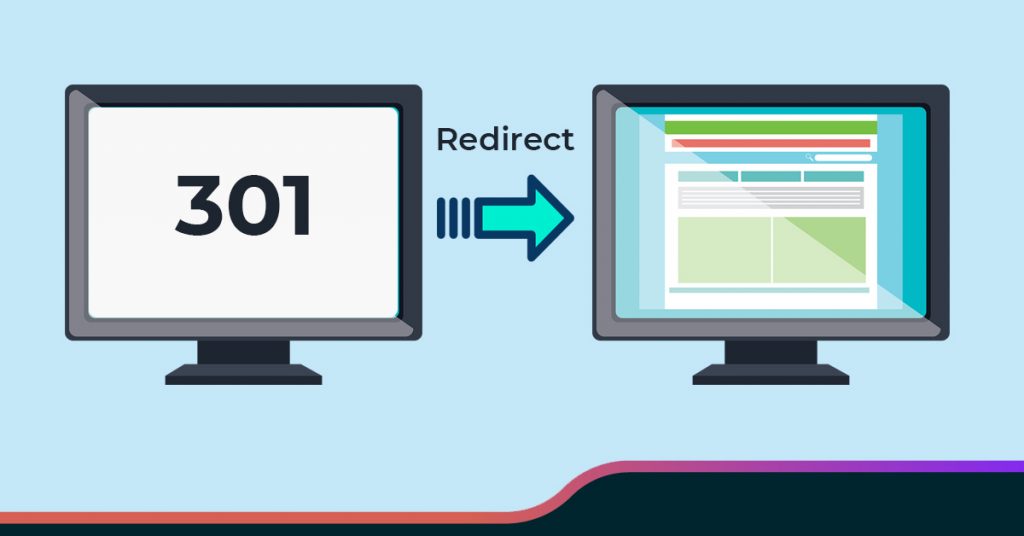
If the Internet is a pond, then SEO is the right hook perhaps to get the right fish. So, this is all about strategizing” how you hook to catch the fish”.
Well, errors are quite common when it comes to keyword research in Google or XYZ browser. It requires going deeper to understand things as per Google Analytics. SEO strategy becomes useful to overcome errors and see desired results.
Here, we are covering the facts related to 301 redirects that help Google Rankings.
What are 301 Redirects?
A 301 redirect is a permanent redirect that hovers in the range of 90-99 % of link equity (ranking power) to the redirected page. Technically, refer to HTTP status code for this type of redirect. In common circumstances, the 301 redirect is the best method for implementing redirects on a website.
The damage it causes due to this is quite similar to link error as in both ways the page is either —not working or redirecting.
So, to understand it better in layman’s terms, you’ll get a message that this page has moved permanently. It suggests this is the new location and we don’t intend to move back.
These are a few SEO strategies that help to improve rankings :
1. Redirect to the Preferred Version of the Website URL
When setting up redirects, always target the most relevant and preferred version of the target URL. A very effective technique when the website generates URLs dynamically and gives multiple URLs of the same page( a classic case of 301 redirects). This not only makes it easier but also stops damaging your keyword list. A Rubbish that deserves a bin.
2.Eliminate pages with 301 status codes from your sitemap
Let’s assume the Police raided the house but before the raid, you cleaned up the site with no conclusive evidence. Similarly, as removing the 301 status page from the sitemap.
Google understands the sitemap to understand which page to crawl and index. If there is no sum and substance of the page and the content then removal of it is better.
Even though Google crawls if there is no use. It also proves irrelevant and of no use. That’ll save the crawling budget and make it easier for Google to interpret.
Here’s one way to find such pages:
Find your sitemap URL (this is usually yourdomain.com/sitemap.xml… but not always)
Quite helpful if you download all the URLs.
Now copy the list of URLs into this free HTTP status code checker (note: limited to 100 URLs at a time)
Filter for pages with 301 status codes.
Looking for a quicker and easier method? Use a robust Site Audit to crawl your website, then head to the overview report and look for “3XX redirect in sitemap” errors
.Eliminate these URLs from your sitemap and replace them with the final redirect URL (if it’s not already in there).
3.Fix redirect chains
Redirect chains occur when a series of two or more redirects between the initial URL and destination URL.
Here’s what Google says about these:
While Googlebot and browsers can follow a “chain” of multiple redirects (e.g., Page 1 > Page 2 > Page 3), we suggest redirecting to the final destination.
If this is not practical, allow the no. of redirects in the chain low, ideally no more than 3 and fewer than 5
Redirect chains serve no other purpose than to damage user experience and slow things down, so you should prevent it if possible.
This helps to check for redirect chains on up to 100 URLs using this HTTP status code checker.
Look for pages with two or more redirects.
4.Fixing Redirect Loops
This possibly occurs when the same thing happens again. This creates an infinite loop of URLs in the chain. Creating infinite Loop of redirects.
A classic case that is quite confusing and a trap for both search engines and users alike.
Example : page >1 Page 2> Page 3>Page 2 > Page 3 [….]
This allows you to find redirect batches of 100 using the same HTTP status code checker. You can look for “exceeded maximum no. of redirect errors”.
If you want to check for more than 100 pages, then you check the internal pages having redirect loop issues, this way you can fix them.
- If the URL is not supposed to redirect, you can change the response code to 200.
- If the URL is supposed to redirect, removing the final destination URL and eliminating of loop helps. Then remove or replace the final page to all links to redirect the URL
5 Fix Broken Redirects
This is a complex issue. As the user redirects to a dead page.
The worst scenario as most visitors will visit or leave your website, and a variety of search engines will abandon the crawl. This can be checked in batches using an HTTP status code checker.
This way you can check for more pages. Bad because most visitors will leave the website, and most search engines will crawl. You can check these errors in batches using an HTTP status code checker.
To check more pages, look for “Broken Redirect” errors in the Internal pages.
Fix these errors by either:
Reinstating the dead page (if deleted accidentally)
Removing the links to the redirected URL.
6.Redirect 404 pages :
Pages that see 404 status are dead, and a browser returns a page like this. It commonly occurs when a user types incorrectly. You can see an example of this- it makes total sense to return a 404 page for the URL.
- They’re crawlable: It affects the ranking a big way as if they’re clickable, these users are going to end up clicking internal links only to see a dead page. A painful experience for both users and stakeholders.
- Having Backlinks: As it is a complete waste. Backlinks points to them are equally wasted.









